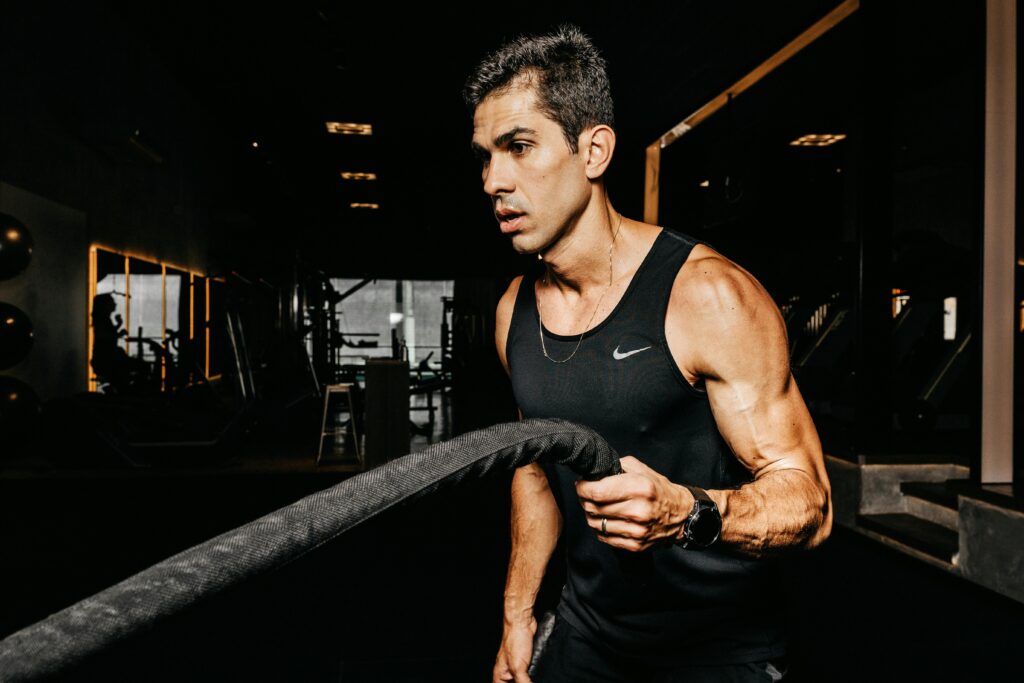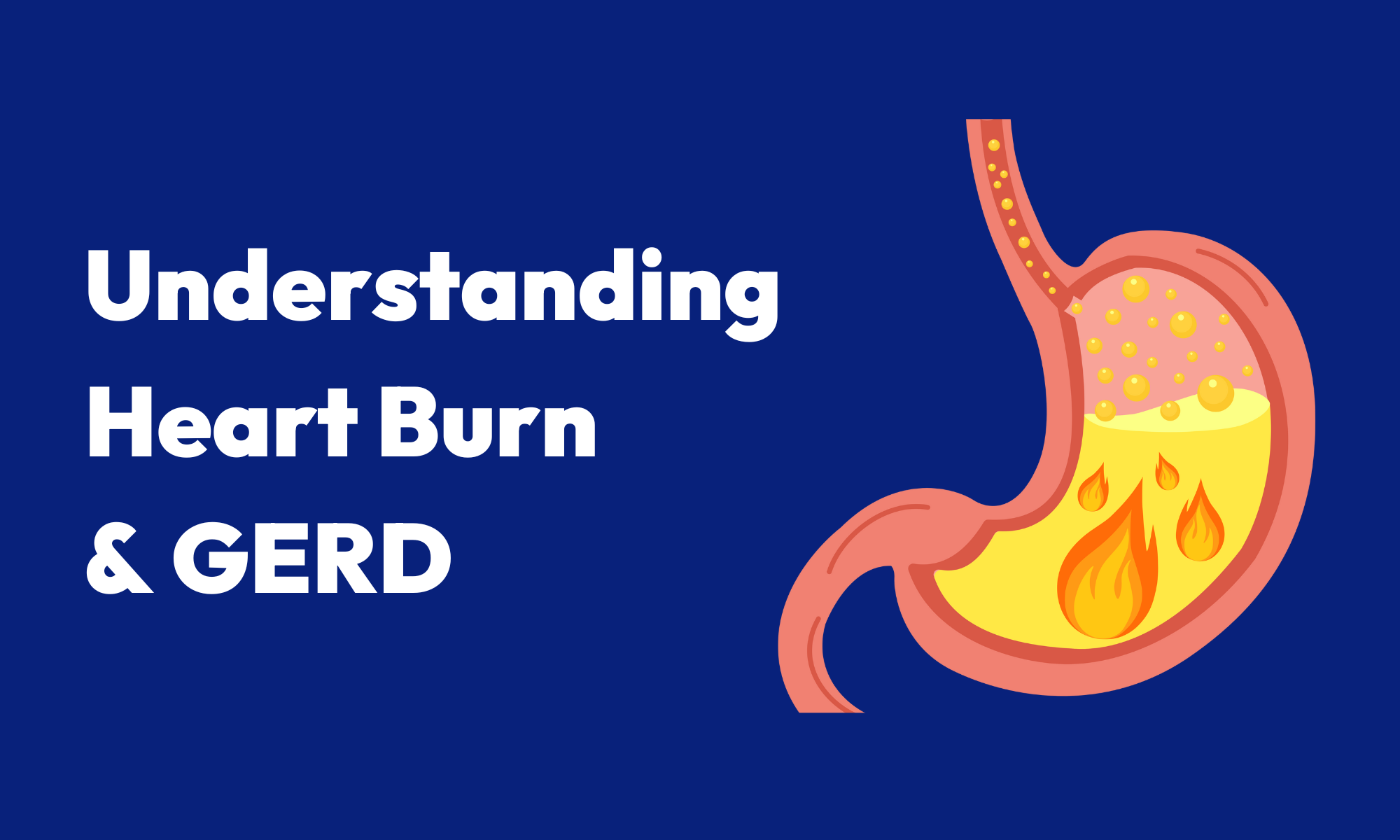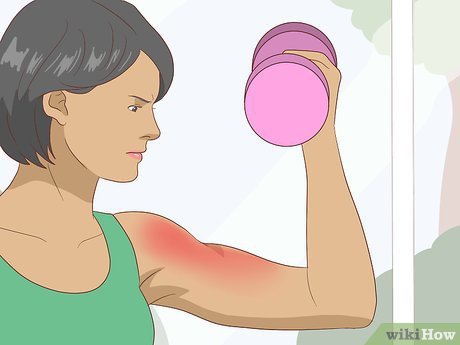Muscles burn when exercising due to lactic acid accumulation from anaerobic respiration. This happens when oxygen supply can’t keep up with demand.
Experiencing a burning sensation in your muscles while working out is a common phenomenon, signaling that your body is being pushed to its limits. This discomfort is a result of your muscles switching from aerobic to anaerobic energy production, a process that occurs when the intensity of an activity outpaces the amount of oxygen available.
As you engage in physical exercise, your muscles require more energy than oxygen-rich blood can provide. Consequently, your body starts to break down glucose without oxygen, leading to the production of lactic acid. The increased lactic acid levels temporarily cause a burning sensation, along with muscle fatigue. Understanding this natural response is essential for fitness enthusiasts aiming to optimize performance and recovery.

Credit: www.amazon.com
Why Do Muscles Burn When Exercising
Working out can often lead to a fiery sensation in your muscles. It is an indication that you are stretching yourself.
You may wonder why this happens. Let’s dive into what causes that notorious muscle burn during exercise.
The Physiology Of Muscle Fatigue
Muscle fatigue marks the start of the burn. It’s your body signal that your muscles are working hard.
- Oxygen is vital for muscle work. During exercise, we may use it up quickly.
- As muscles tire, energy production shifts gears to keep them going.
- This shift can lead to short-term changes that cause the familiar burn.
Lactic Acid: Friend Or Foe?
Lactic acid is often blamed for the burn. But, is it a villain?
In reality, lactic acid plays an important role in energy production during intense exercise.
| The Role of Lactic Acid in Muscle Burn | |
|---|---|
| Myth | Lactic acid is a waste product that causes muscle pain. |
| Truth | Lactic acid forms to help continue energy production when oxygen is low. |
It’s not your foe. Lactic acid helps you power through when your muscles lack oxygen.

Energy Systems At Work
Feeling the burn during a tough workout? This sensation is your muscles telling you their energy system is firing on all cylinders. When muscles flex and bend, intricate processes inside our cells leap into action. Understanding these processes reveals the source of that fiery burn.
Aerobic Vs Anaerobic Processes
Muscles require energy, and how they get it depends on your activity’s intensity. Aerobic processes occur with enough oxygen, supporting activities like jogging. In contrast, anaerobic processes take over during high-intensity workouts like sprinting when oxygen is scarce. Both play a role in muscle energy but shift depending on the task at hand.
| Aerobic | Anaerobic |
|---|---|
| Long, less intense exercise | Short, high-intensity bursts |
| Uses oxygen | Does not use oxygen |
| Creates less lactic acid | Produces more lactic acid |
Atp And Muscular Contraction
At the heart of muscle contraction lies a molecule called ATP (Adenosine Triphosphate). Muscles use ATP for immediate energy. Think of ATP as the fuel for muscle movement. When we exercise, ATP breaks down, and this releases the energy muscles need to contract.
- ATP provides quick energy to muscles.
- Breakdown of ATP causes a release of energy.
- Muscle contractions are powered by ATP.
The burning sensation is partly due to ATP depletion and the accumulation of byproducts like lactic acid, especially during anaerobic exercise. Over time, the body replenishes ATP, but during intense exercise, demand may outpace supply, leading to that familiar muscle burn.
Role Of Lactic Acid
Have you ever wondered why your muscles burn during a tough workout? Lactic acid plays a big part. It’s a natural product of strenuous exercise. It helps turn glucose into energy when oxygen is low. Your body uses lactic acid differently than you might think.
Myth Busting: Lactic Acid As A Waste Product
Many people think of lactic acid as a bad thing. They say it causes muscle pain after exercise. But that’s not entirely true. Lactic acid actually helps your muscles. It turns into fuel for your body. After a point, leftover lactic acid can build up. That’s when you might feel the burn. Yet, this isn’t harmful. It tells you when to rest.
Lactic Acid Threshold And Performance
Your body has a lactic acid threshold. This is the point during exercise when lactic acid starts to collect in your muscles. Staying below this threshold means less burn. Going above it means more burn. Training can raise this threshold. It lets you work out harder without feeling the burn so soon. This is key for athletes who want better performance.
| Exercise Type | Effect on Lactic Acid Threshold |
|---|---|
| Aerobic | Increases slowly |
| Strength Training | Can raise threshold quickly |
| High-Intensity Intervals | Improves threshold over time |
With the right training, your muscles get better at using lactic acid. They can push the threshold higher. This lets you exercise longer and stronger.
The Sensation Of Muscle Soreness
Imagine lifting weights or running hard. Soon, your muscles will start aching and burning. This feeling is common during intense exercise. But why does it happen? Our muscles go through a lot when we push them. They burn energy, fill with blood, and sometimes, tear a little. This is normal, and it helps us get stronger. However, it can also cause that well-known soreness.
Delayed Onset Muscle Soreness (doms) Explained
DOMS hits us after we exercise, often peaking around 24 to 72 hours later. It’s the body’s natural response to unusual exertion. It represents small tears in the muscle fibers and an inflammatory response. This is a sign that the muscles are repairing and strengthening.
- Stiffness: Muscles feel tight and hard to move.
- Aching: General pain is present in the used muscles.
- Tenderness: Pressing the muscle causes discomfort.
These symptoms are a normal part of the body’s adaptation process to new activities or an uptick in intensity.
Distinguishing Good Pain From Bad Pain
Not all muscle pain is good. There’s a line between the natural soreness that comes from a good workout and the pain that signals injury. Knowing the difference is key for safety.
| Good Pain | Bad Pain |
|---|---|
| Mild to moderate dull ache | Sharp or acute pain |
| Begins during or right after exercise | It occurs unexpectedly or severely |
| Decreases with rest and recovery | Continues or worsens with activity |
Good pain means you’re challenging your muscles. Bad pain could mean you’re hurt. Recognizing when the pain is not typical is crucial. Rest and consult a professional if the pain seems off or doesn’t subside with adequate rest.
Adapting To The Burn
When you exercise, muscles often feel a burning sensation. This is a natural response to intense activity. But wondering why this happens? It’s a sign that your muscles are getting stronger. Let’s dive into how the body adapts to this burn and becomes more capable over time.
How Consistent Training Alters Perceptions
Regular exercise changes how you feel the burn. At first, it might seem tough. But your body adapts. It starts to recognize this burn as a normal part of working out. Consistent training makes the sensation less intense. You’ll soon find it manageable and a sign of progress.
Increasing Your Lactic Threshold
The burning sensation is tied to lactic acid in your muscles. It builds up when you push hard. However, training can raise your lactic threshold. This means you can work out harder before feeling the burn. Here’s how to increase it:
- Start slowly, with lower-intensity workouts.
- Ramp up the intensity gradually over weeks.
- Include interval training in your routine.
- Give your body rest to recover and build strength.

Credit: jadablitzfitness.com
Recovery Strategies
Muscle burning during exercise is a sign of hard work. Yet, it can lead to soreness. Proper recovery strategies ease discomfort and speed up healing. Let’s explore optimum ways to help muscles regain strength.
Active Recovery And Its Benefits
Active recovery involves low-intensity movement after intense workouts. This approach boosts circulation, promoting nutrient delivery and waste removal.
- Reduces lactic acid
- Enhances flexibility
- Minimizes muscle stiffness
Activities like walking, cycling, or swimming are ideal. They keep the muscles moving without overexertion.
Nutrition And Hydration’s Impact On Recovery
Proper nutrition and hydration are vital for muscle recovery. The right foods and fluids replenish energy stores and repair tissues.
| Nutrients | Benefits | Sources |
|---|---|---|
| Protein | Repairs muscle fibers | Chicken, eggs, tofu |
| Carbohydrates | Restores glycogen | Rice, potatoes, fruits |
| Electrolytes | Maintains fluid balance | Bananas, dairy, coconut water |
Remember to drink water to avoid dehydration. Follow intense workouts with meals and fluids rich in these essentials.
Preventing And Managing Burn And Fatigue
Muscle burn during exercise is a signal from our body. It tells us that our muscles are being pushed to new limits. This sensation is due to lactic acid, which is produced when muscles use glucose without enough oxygen (anaerobic metabolism). But don’t worry, there are ways to prevent and manage this burn and fatigue, ensuring a more comfortable and effective workout.
Training Techniques To Reduce Burn
- Start Slow: Start out with low-intensity workouts and work your way up.
- Incorporate Rest: Allow for adequate rest between sets for recovery.
- Stay Hydrated: Drink plenty of fluids to maintain muscle function.
- Balance Workouts: combine strength, cardio, and flexibility exercises.
- Use Proper Form: Proper technique can prevent unnecessary strain.
Listening To Your Body
Listen closely to your body’s signals. If the burn is too intense, reduce the intensity or take a quick break. Continually evaluate your level of fitness and modify your training regimen as necessary. If you experience sharp pains or discomfort beyond the typical muscle burn, it’s crucial to stop immediately and consult a professional.
Adequate sleep and nutrition are vital. They help in muscle recovery and energy resupply. Don’t overlook these key factors in your quest for fitness.

Credit: gastrostartx.com
The Psychology Of Exercise Burn
Many people feel a burning sensation in their muscles during exercise. This feeling is a hint from your body. It is shouting, “You are pushing hard!” Acknowledging the psychological aspects of this burn will enable you to rise to the occasion. It may also inspire you to press on.
Mental Grit And The Discomfort Zone
Facing the burn takes courage and mental strength. As your muscles ache, your brain challenges you to stop. Pushing through this signal boosts your mental toughness. This process is key for growth, both physically and mentally.
Think of exercise as a mental battlefield. Your willpower faces off against muscle fatigue. When you choose to keep moving, you enter the discomfort zone. Here, your mental grit takes the spotlight.
- Step out of your comfort zone
- Acknowledge the burn as a sign of progress
- Champion your mental capabilities
The Reward System: Endorphins And Exercise
Exercise sparks a cascade of events in your brain. Endorphins, the ‘feel-good’ hormones, play a star role. They help ease the pain and trigger positive feelings.
Your body releases more endorphins the more activity you get in. This natural reward system keeps you coming back for more. Your body loves the rush of happiness from a good workout. It becomes a healthy addiction.
| Exercise Action | Endorphin Effect |
|---|---|
| Breathing harder | More oxygen, more endorphins |
| Heart pumping | Improved mood and energy |
| Pushing limits | Increased pain tolerance |
Frequently Asked Questions On Why Do Muscles Burn When Exercising
Is It Good For Your Muscles To Burn While Working Out?
Muscle burning during a workout often indicates muscle fatigue from lactic acid, signifying intense exercise. This sensation can be normal and part of improving muscular endurance and strength. Yet, persisting or severe pain suggests overexertion and a need for rest.
Always listen to your body’s signals.
Does Muscle Burn Mean Growth?
Muscle burn during a workout is not a direct indicator of muscle growth. It reflects lactic acid buildup, which can signal muscle fatigue rather than size or strength increases. Consistent training and proper nutrition are key for muscle growth.
How Do I Stop My Muscles From Burning During Exercise?
To prevent muscle burn during exercise, gradually increase intensity, stay hydrated, balance your electrolytes, practice proper breathing, and incorporate rest periods.
What Does Your Body Burn When You Exercise?
During exercise, your body primarily burns glucose and fat for energy. Intensity dictates which source is predominant, with carbohydrates fueling intense activities and fats during moderate exercises.
Conclusion
Understanding muscle burn during exercise is crucial for any fitness journey. It symbolizes hard work and progress but should be managed. Embracing the burn can push you to new heights, while listening to your body prevents injury. Keep challenging yourself, and enjoy the rewards of a stronger, healthier you.

I am a health writer and blogger based in the US and UK. I have been with the health department for six years. And I give advice on various health problems and solutions. I have a lot of experience in health matters and I share it here.

